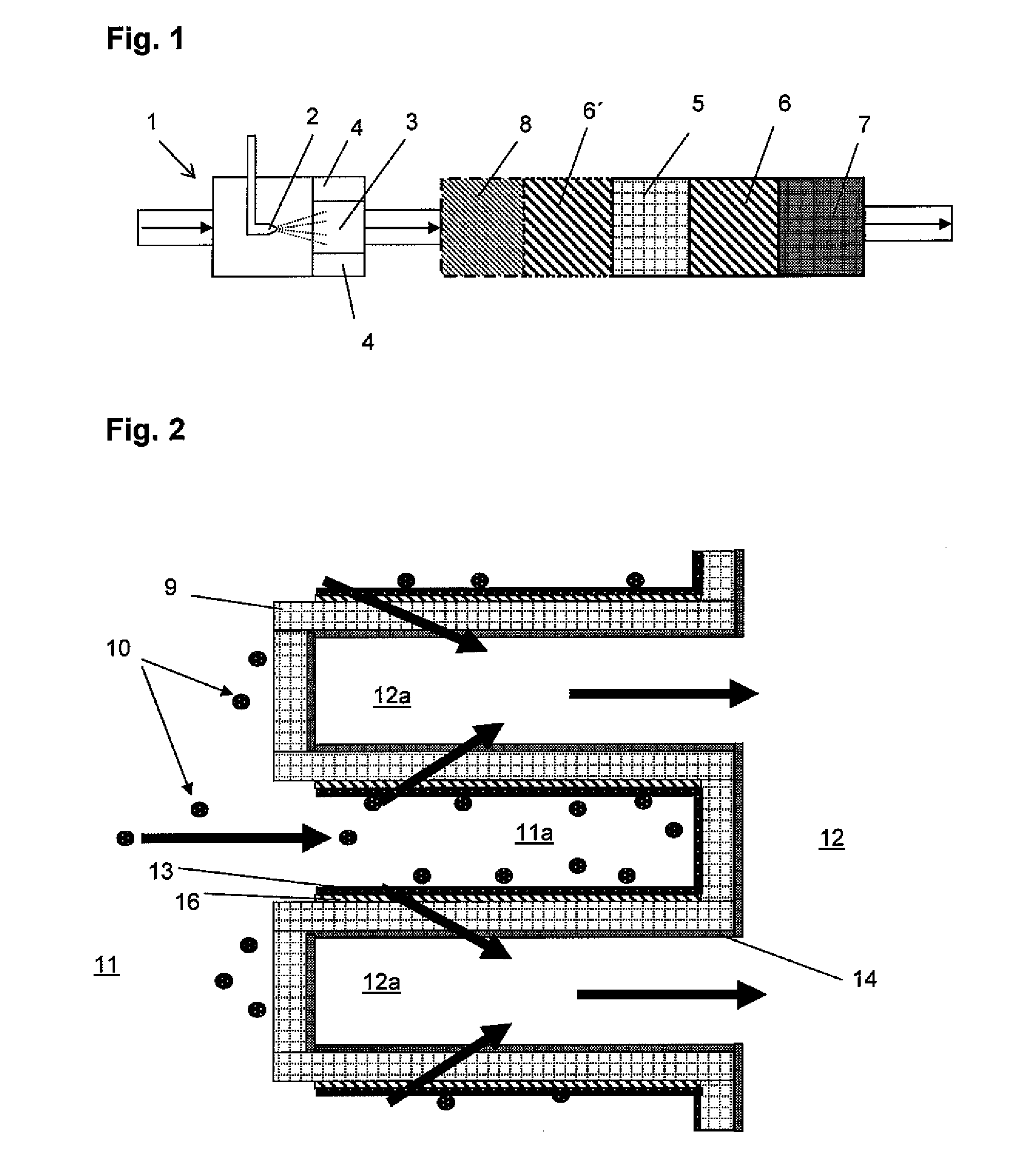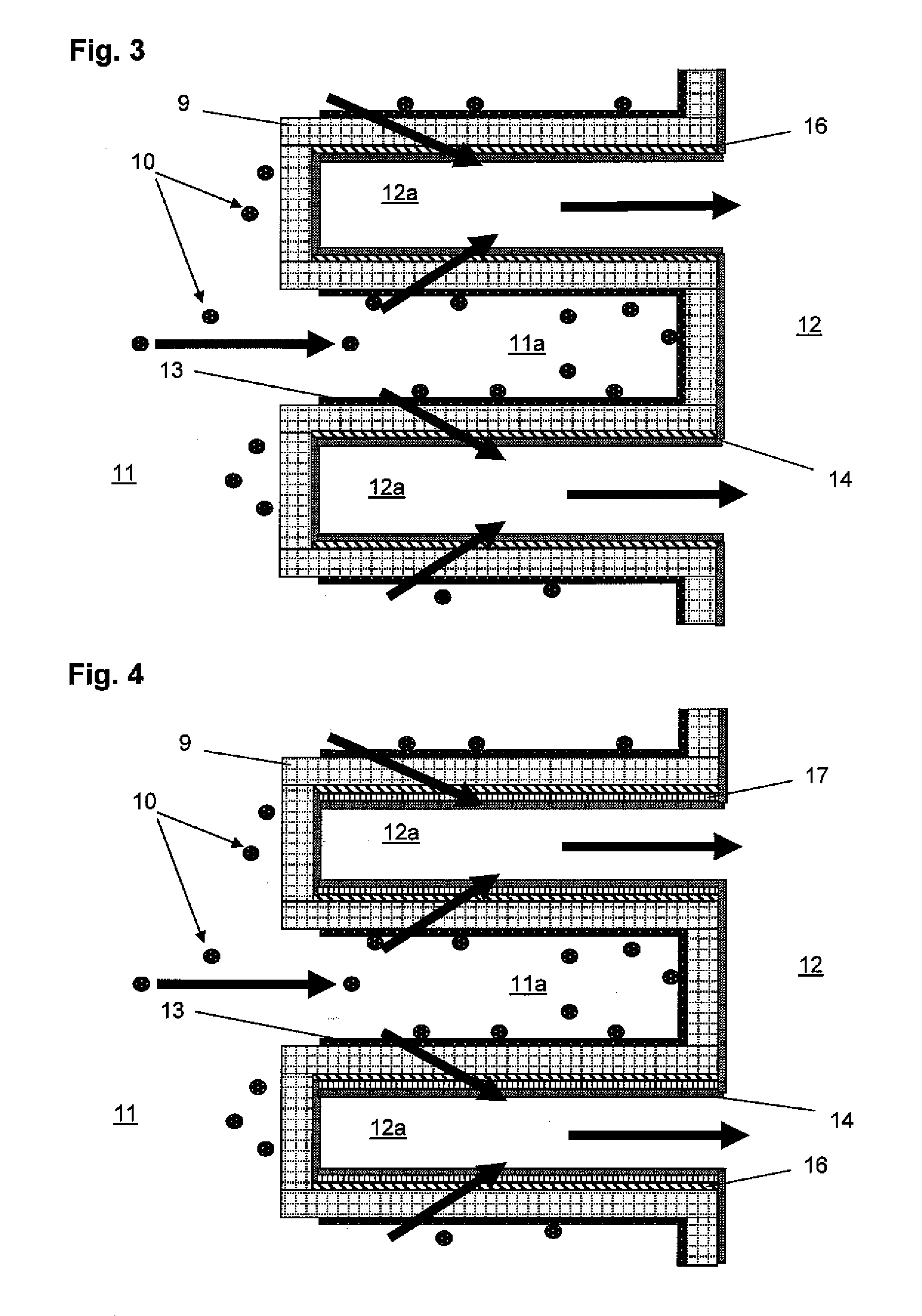Device For Reducing Dibenzodioxin Emissions, Dibenzofuran Emissions And Particle Emissions
a dibenzofuran and dibenzodioxin technology, applied in combination devices, exhaust treatment, using liquid separation agents, etc., can solve the problems of increasing the counterpressure of exhaust gas, difficult to apportion the reducing agent, and difficult to reduce nitric oxide using the scr method in internal combustion engines operating in vehicles. achieve the effect of reducing pcdd emissions and pcdf emissions
- Summary
- Abstract
- Description
- Claims
- Application Information
AI Technical Summary
Benefits of technology
Problems solved by technology
Method used
Image
Examples
Embodiment Construction
[0066]An exhaust gas after-treatment system for selective catalytic reduction and for the reduction of solids particles in the exhaust gas of an internal combustion engine is shown schematically in FIG. 1. The exhaust gases, symbolized by the arrows in FIG. 1, which are generated by the combustion processes in an internal combustion engine (not shown) initially enter an exhaust gas processing system 1 in which a reducing agent is added to the hot exhaust gas as close to the engine as possible. As is common practice in motor vehicles with SCR catalyzers, the reducing agent is an aqueous urea solution but, of course, it is also possible to add urea in solid form as has already been extensively described in the pertinent technical literature. Further, it is possible to add ammonia as a reducing agent which is obtained at another place, e.g., under more favorable thermal conditions, from a material which splits off ammonia. Depending on the operating parameters of the internal combustio...
PUM
| Property | Measurement | Unit |
|---|---|---|
| Thickness | aaaaa | aaaaa |
| Thickness | aaaaa | aaaaa |
| Pore size | aaaaa | aaaaa |
Abstract
Description
Claims
Application Information
 Login to View More
Login to View More - R&D
- Intellectual Property
- Life Sciences
- Materials
- Tech Scout
- Unparalleled Data Quality
- Higher Quality Content
- 60% Fewer Hallucinations
Browse by: Latest US Patents, China's latest patents, Technical Efficacy Thesaurus, Application Domain, Technology Topic, Popular Technical Reports.
© 2025 PatSnap. All rights reserved.Legal|Privacy policy|Modern Slavery Act Transparency Statement|Sitemap|About US| Contact US: help@patsnap.com



